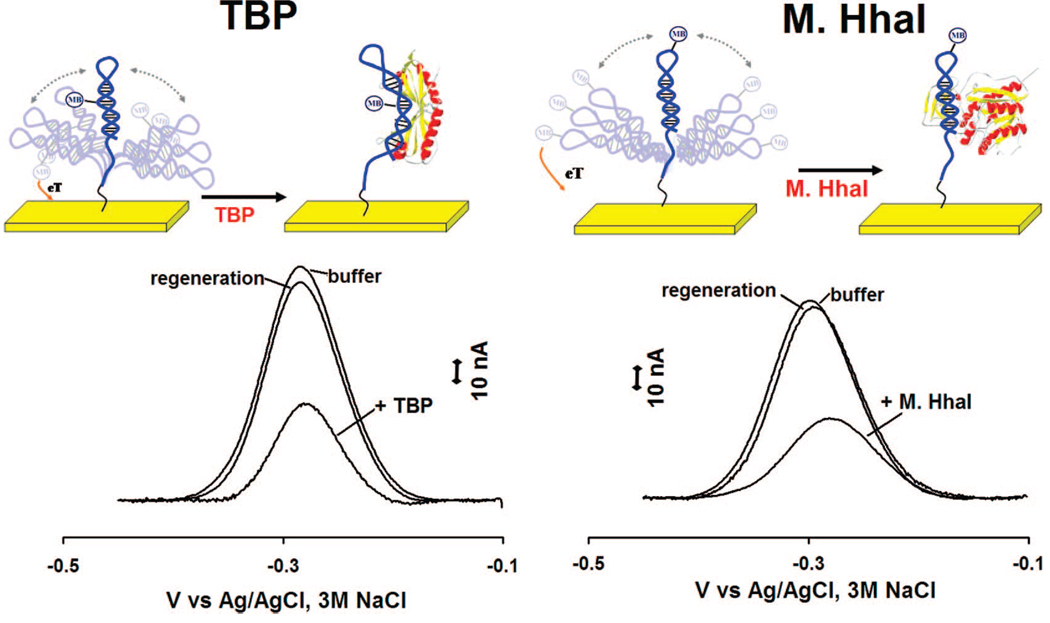Figure 1.
Schematics of E-DNA-like sensors for the detection of DNA binding proteins. (Top) The sensor is composed of a DNA hairpin covalently attached to a classic gold rod electrode using thiol-gold self-assembled monolayer chemistry and containing an internal methylene blue redox tag. (Bottom) In the absence of target relatively efficient collision between the label and the electrode produces a large faradic current. Upon target binding this faradic current is significantly reduced, presumably because the bulky structure of the protein reduces the collision rate. Because all of the sensing components are strongly chemisorbed to the interrogating electrode, the sensor is readily regenerated via a 30 s wash in 8 M guanidine chloride.

